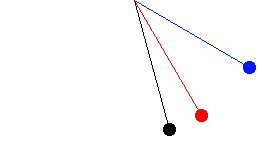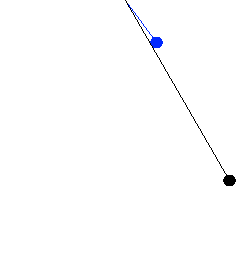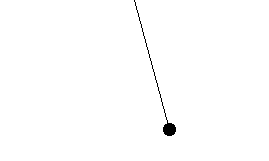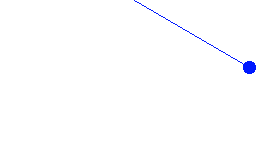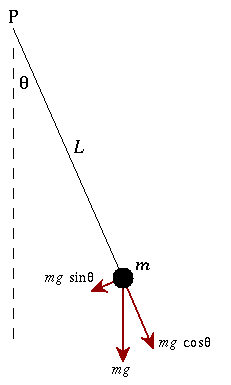 |
A simple pendulum consists of a mass m hanging from a string of length L and fixed at a pivot point P. When displaced to an initial angle and released, the pendulum will swing back and forth with periodic motion. By applying Newton's secont law for rotational systems, the equation of motion for the pendulum may be obtained  , and rearranged as , and rearranged as  . .
If the amplitude of angular displacement is small enough that the small angle approximation ( ) holds true, then the equation of motion reduces to the equation of simple harmonic motion ) holds true, then the equation of motion reduces to the equation of simple harmonic motion
 . .
The simple harmonic solution is

with  being the natural frequency of the motion. being the natural frequency of the motion.
|



 ,
, .
. ) holds true, then the equation of motion reduces to the equation of simple harmonic motion
) holds true, then the equation of motion reduces to the equation of simple harmonic motion
 .
.
 being the natural frequency of the motion.
being the natural frequency of the motion.
